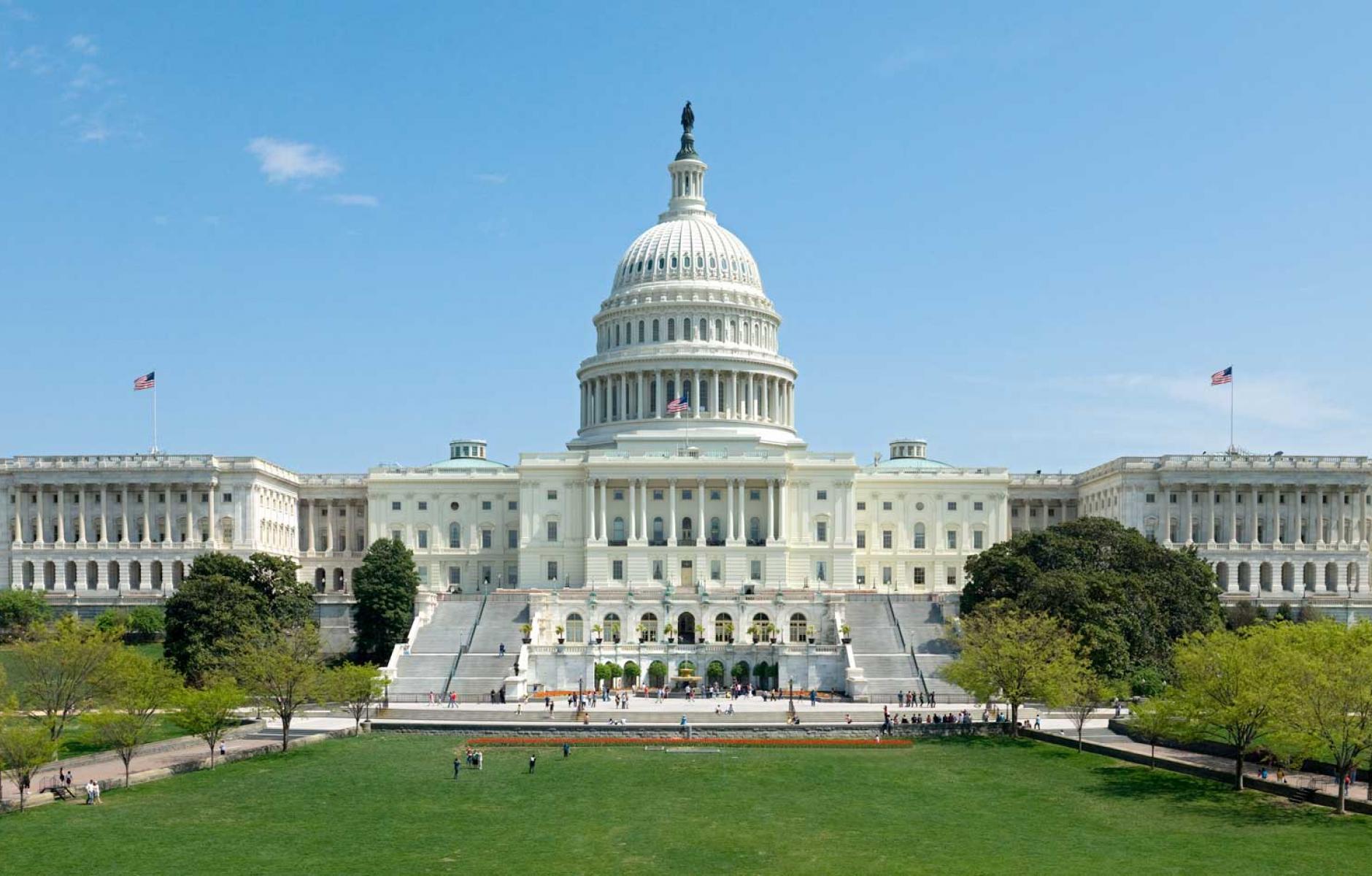
Five ways federal infrastructure spending makes cities poorer
The United States Congress seems poised to spend a trillion dollars or more on infrastructure in a bipartisan consensus to stimulate the economy. Without major changes in our approach, this spending is going to make our cities poorer, weaken our country and -- once the temporary stimulus has passed -- leave America in worse financial shape. Here are five ways a federal infrastructure program will make our cities, towns and neighborhoods poorer.
1. The National Economy might grow today, but cities take on the long term liabilities.
Policymakers generally believe that infrastructure spending is a common sense way to create economic growth. The federal government invests in infrastructure, this creates jobs during the construction that then helps the private sector be more competitive. All of this grows the economy and improves the Gross Domestic Product (GDP). It’s simple. What’s not to love?
Since World War II, what we’ve seen time and again is that the federal government will pay to build things and then state and local governments are tasked with maintaining them. The transactions create GDP growth, but they leave cities with long term promises that they cannot keep. Those promises don't come due for decades, which makes the ribbon cuttings all the more seductive to local officials.

John Maynard Keynes suggested that, in a depressed economy, the government should pay people to dig holes in the ground and then fill them back up. If the federal government just did that, we'd finish where we started. When a federal program instead pays to build a new bridge, we now have another bridge to maintain.
Our cities are drowning in unproductive liabilities. The last thing they need is more.
Related Reading:
2. Federal infrastructure spending goes primarily to the least financially productive parts of the American development pattern.
Productivity is a measure of outputs to inputs. For infrastructure, how much do we get back for each dollar spent?
In the early days of constructing the interstate system, the return on our national infrastructure investments was very high. We were connecting places remote from each other and transforming the entire economy in the process. Those returns have steadily diminished, for obvious reasons: a community's fifth interchange, sixth mile of frontage road or seventh river crossing cannot possibly be as transformative as the first, despite costing magnitudes more.

Joe Minicozzi and the team at Urban 3 have done the most thorough job today of documenting the productive parts of the American development pattern (wealth per acre). In hundreds of cities across the country that have been modeled, the trend is clear: the newer the development the higher the cost and the lower the financial productivity.
Control of both houses of Congress is now aligned with suburban and exurban development interests, areas with the highest cost and lowest returning infrastructure investments. Small towns and urban areas -- particularly when they are making better use of existing infrastructure -- present far higher returning alternatives.
Related Reading:
- The Cost of Auto Orientation
- Walmart or Smallmart?
- The Nature of Productivity
- A Conversation with Joe Minicozzi (podcast)
3. Federal infrastructure spending prioritizes new construction. What cities need most is maintenance.
Gresham's law states that bad money drives out good. This can be seen in local infrastructure spending decisions. Too often, cities that have more infrastructure than they have tax base to sustain are induced into moving money from maintenance and into new construction as a local match for federal infrastructure programs. The good money—maintenance—is chased out by the bad money—new construction—accelerating the critical declines in existing systems while perversely adding even more infrastructure to maintain.

It would be really easy to say that politicians love ribbon cuttings and, since there are no good photo opportunities for filling potholes and replacing leaky pipes, politicians prefer new construction to maintenance. There is some truth to this, but what we actually are seeing is the inertia of an economy that doesn't quite have the incentives to pivot from the old, failing model.
Our economy is based on growth. All our pension promises, public debt payments and entitlement spending rely on aggressive levels of future growth. We used to be able to create this growth through infrastructure investments; build an interchange and a frontage road and get the big box stores, strip malls and housing subdivisions that result. Our entire economy -- from local zoning codes to bank financing programs to insurance underwriting to auto sales and on and on -- is oriented around repeating this simple formula, despite the diminishing returns.
What we have not figured out -- and what we won't figure out with another flood of federal infrastructure spending -- is how to translate maintenance into growth. How do we go out and fill potholes and fix leaking pipes and have that result in additional wealth in our neighborhoods? This is a daunting challenge that requires us to rethink -- from bottom to top -- how we develop our places. We need to modernize our zoning codes, building standards, housing incentives, insurance programs, etc. There are a lot of people trying to do this, but they get cast aside every time the federal gravy train rolls into town.
Related Reading:
4. Federal infrastructure spending induces local governments to take on unproductive debt.

The Transportation Investment Generating Economic Recovery (TIGER) grant program is one of the most popular federal infrastructure spending programs ever. The discretionary grants are awarded on a competitive basis based on criteria, one of the most important being the following:
(i) Jurisdictional and Stakeholder Collaboration. DOT will consider the extent to which projects involve multiple partners in project development and funding, such as State and local governments, other public entities, and/or private or nonprofit entities.
In other words: Who else is stepping up with money? Local governments -- already strapped for cash and weighed down by liabilities -- must frequently agree to take on additional debt as their local contribution. This happens with TIGER and nearly all other federal infrastructure programs.
Productive debt is debt that can be paid back with the proceeds collected from the project. Local governments generally rely on property and sales tax, but federal projects rarely add enough to the local tax base to extinguish the debt while sales tax revenue from a project, if there is any, ends with the project. It's really hard for local governments to turn down large dollar amounts, but it is comparatively simple to increase the local debt burden.
Related Reading:
- The TIGER Sleeps Tonight (in Staples)
- Investing Cheap Money
- Roads and Debt
- The Economic Implications of More Infrastructure Spending (podcast)
5. Federal infrastructure spending blinds local governments to better projects they could do themselves right now.
The primary lesson of the Great Depression and World War II was that, if we focus our resources and energy on a task, Americans can do amazing things. We put this lesson to work after the war building the interstates and suburbia. When the two 70-year-old presidential candidates in our most recent election spoke nostalgically about what America used to be, this is the time period they were speaking of.
America is a very different and more complex country today, but the inertia of those post-war systems is overwhelming. We're still trying to fund highways, bridges and interchanges in a country that really needs better sidewalks, crosswalks and street trees. When we look for the highest returning investments, they are almost all small. We desperately need to make better use of the infrastructure we've already built. That is fine grained work not well-suited for a federal program.
Two Days in September from Julie Campoli on Vimeo.
The way we have structured our governments, cities sit at the bottom of the food chain. Their bureaucracies are oriented up that chain, looking to the programs of state and federal governments for solutions. Instead, they need to be reoriented to the neighborhoods in their own communities. Local officials must humble themselves to ask one simple question day after day after day: What is the next smallest thing we can do right now to make this place better? If local governments did that, the result would transform America. The allure of federal programs is the biggest obstacle to making this critical shift and having the needs of cities, towns and neighborhoods drive our national agenda.
Related Reading:
- Neighborhoods First
- Let's infill a traditional neighborhood (and make a profit)
- Using Tactical Urbanism to Promote Bikability
- Small-scale change, neighborhood by neighborhood
- Paul Stewart on Neighborhood Revitalization (podcast)
Later this week, we're going to look at ways a federal infrastructure bill could be structured to strengthen our cities, towns and neighborhoods.
This article first appeared on Strong Towns.




